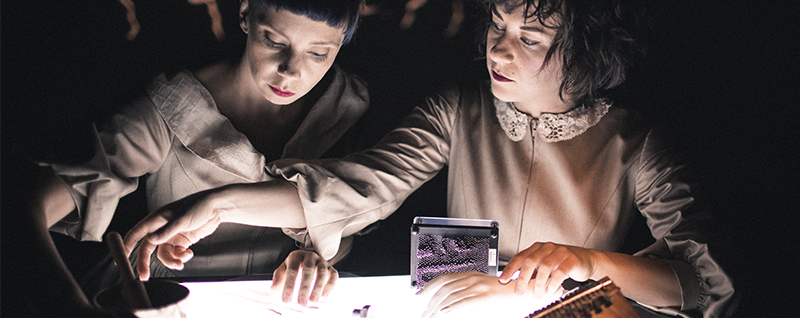Q&A: MANUAL CINEMA

We spoke with Manual Cinema about their innovative, interdisciplinary creative process and how it adds new possibilities to a classic story. Read on to discover the experiments that led to the rising of Manual Cinema’s Frankenstein.
What creatively attracted you to Frankenstein?
We’re always looking for stories that make good marriages with our medium of cinematic shadow puppetry. Frankenstein was appealing to us because it’s a story about the animation of lifeless matter, which is what we do as puppeteers. It’s also a visual story, full of mythic structures and symbols, that can be communicated largely without dialogue. So even though we didn’t know initially what our approach was going to be, there were all these really interesting affinities with our work that promised that adapting it to our medium was going to be really rewarding.
How did you decide that Court would be the right home for this piece?
Charlie Newell simply said to us that if we ever had a project that intersected with classic literature, we should bring it to him. When we brought him Frankenstein he was very enthusiastic, and pretty soon we began speaking about a commission and premiere. One of our Co-Artistic Directors, Drew, was working at Court as a dramaturg in the early years when Manual Cinema was just beginning, so Charlie knew our work from a very early stage.
What are the defining questions and relationships of your Frankenstein?
At its heart, I think our production of Frankenstein is about creation and abandonment. What does it mean to get so wrapped up in the act of creating something that you destroy yourself, your loved ones, and even the very thing you were trying to create? And then, the flip side of that — what does it mean to be created and abandoned — by a parent, by society at large — and then react against that abandonment with violence? These twin stories are very clearly the stories of Victor and The Creature, but in our interpretation, it’s also the relationship between Mary Shelley and her sister Fanny. To explore this relationship across the novel and Mary’s biography, the roles of Victor and Mary are shared by one actor (Sarah Fornace), and the roles of The Creature and Fanny are shared by another (Julia VanArsdale Miller), and these two actresses end up telling most of the story. So even though there are a total of nine puppeteers and musicians on stage, the goal is for the production to feel like a two-hander, in which the audience watches the formation — and then the tragic dissolution — of a relationship between these two people.
Frankenstein is on stage November 1-December 2, 2018.
Want to be the first to see it? Dare to join us on October 31, where we’ll have a frightfully fun Halloween party followed by our final dress rehearsal.
Photo of Sarah Fornace and Julia Miller by Joe Mazza.